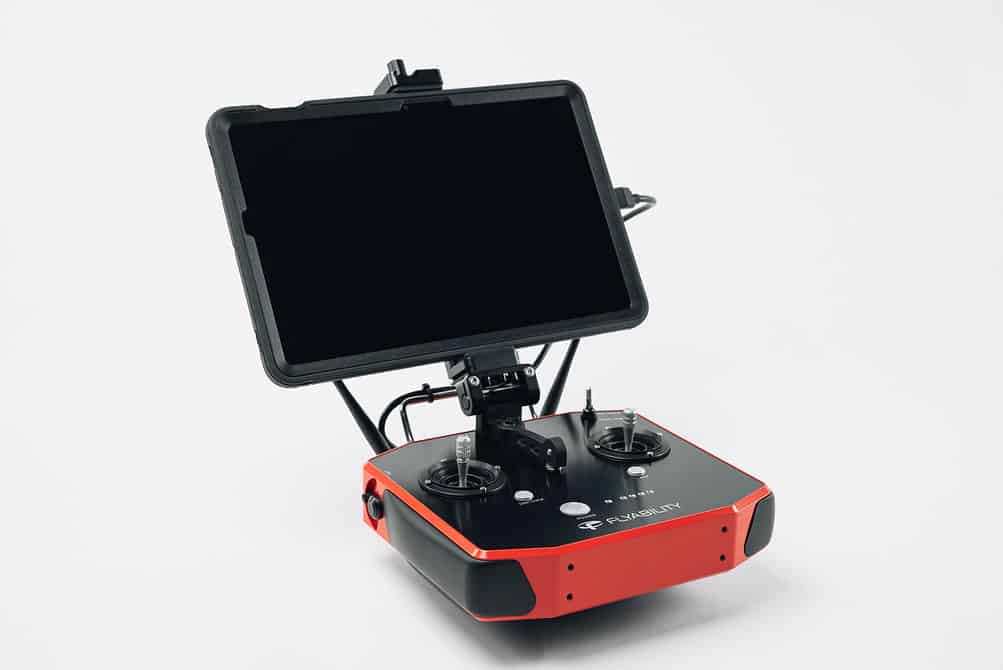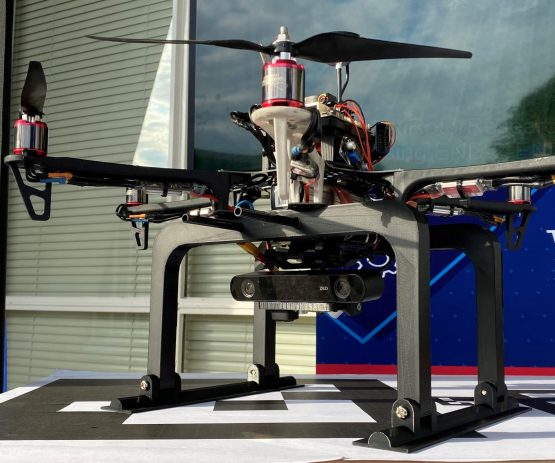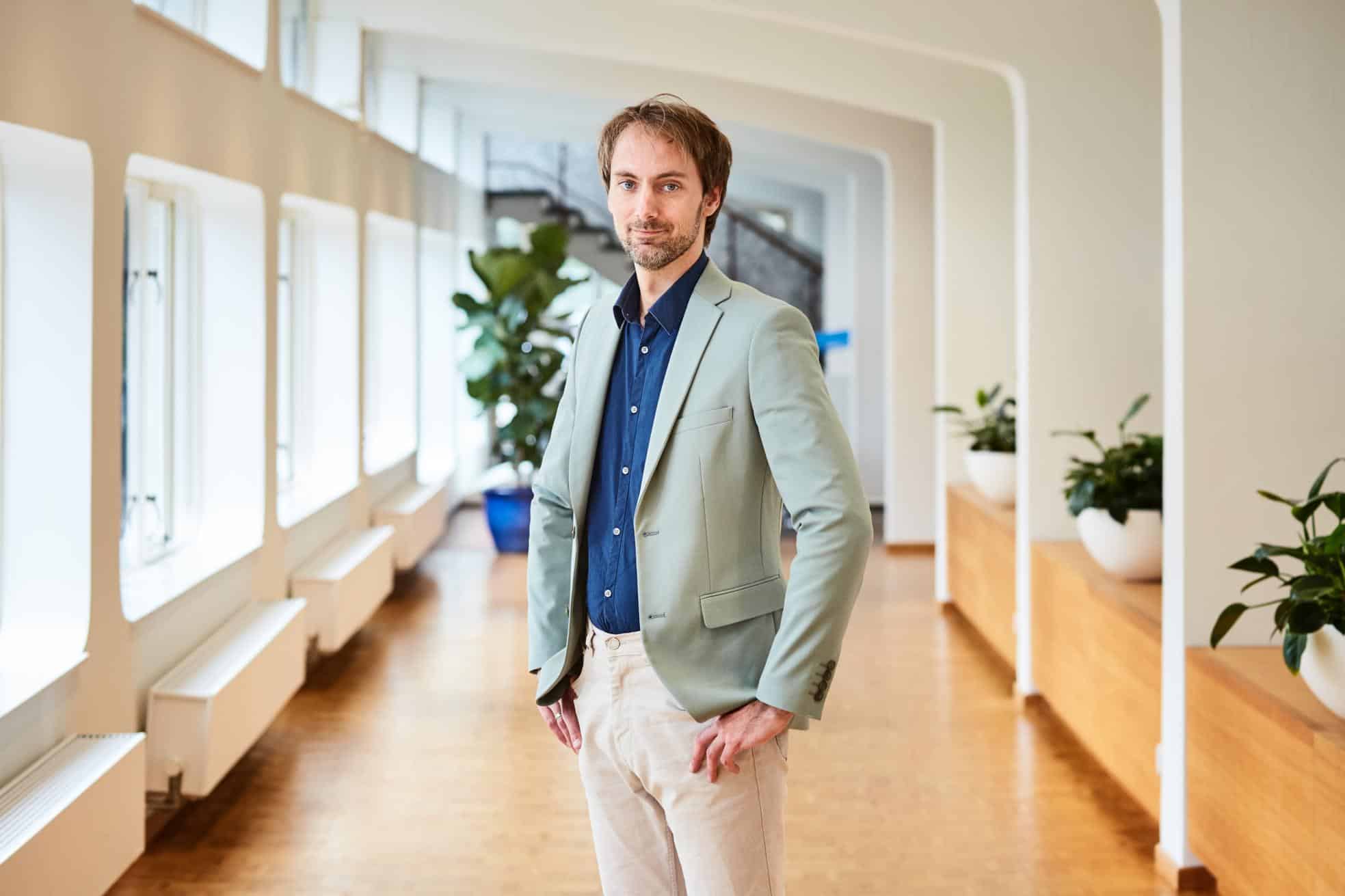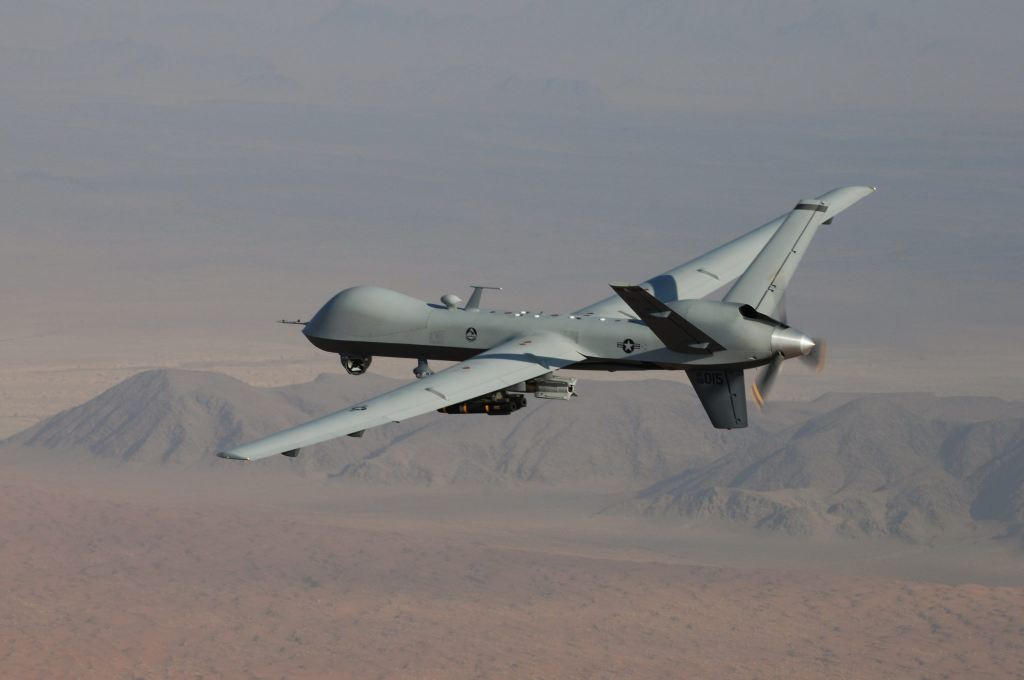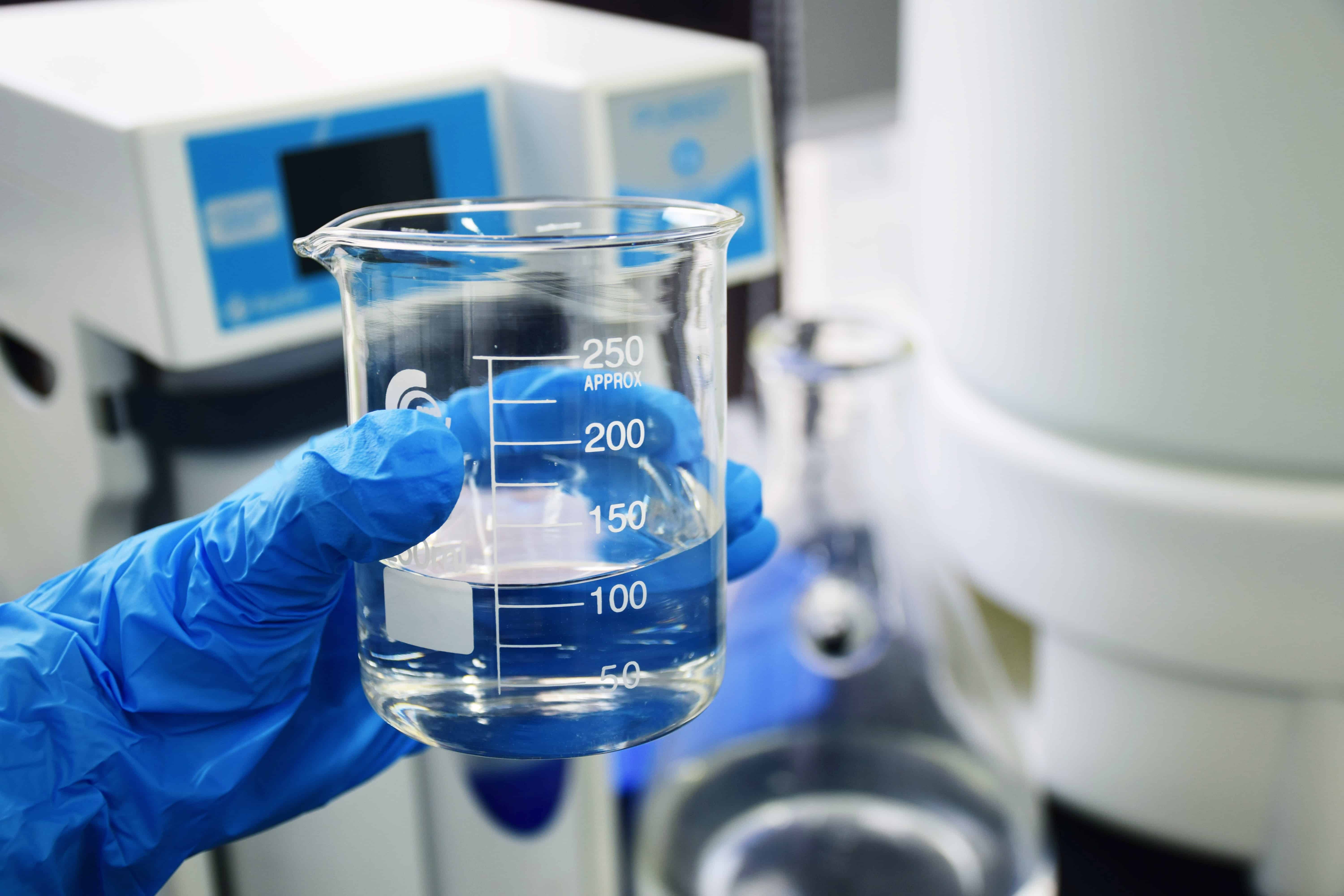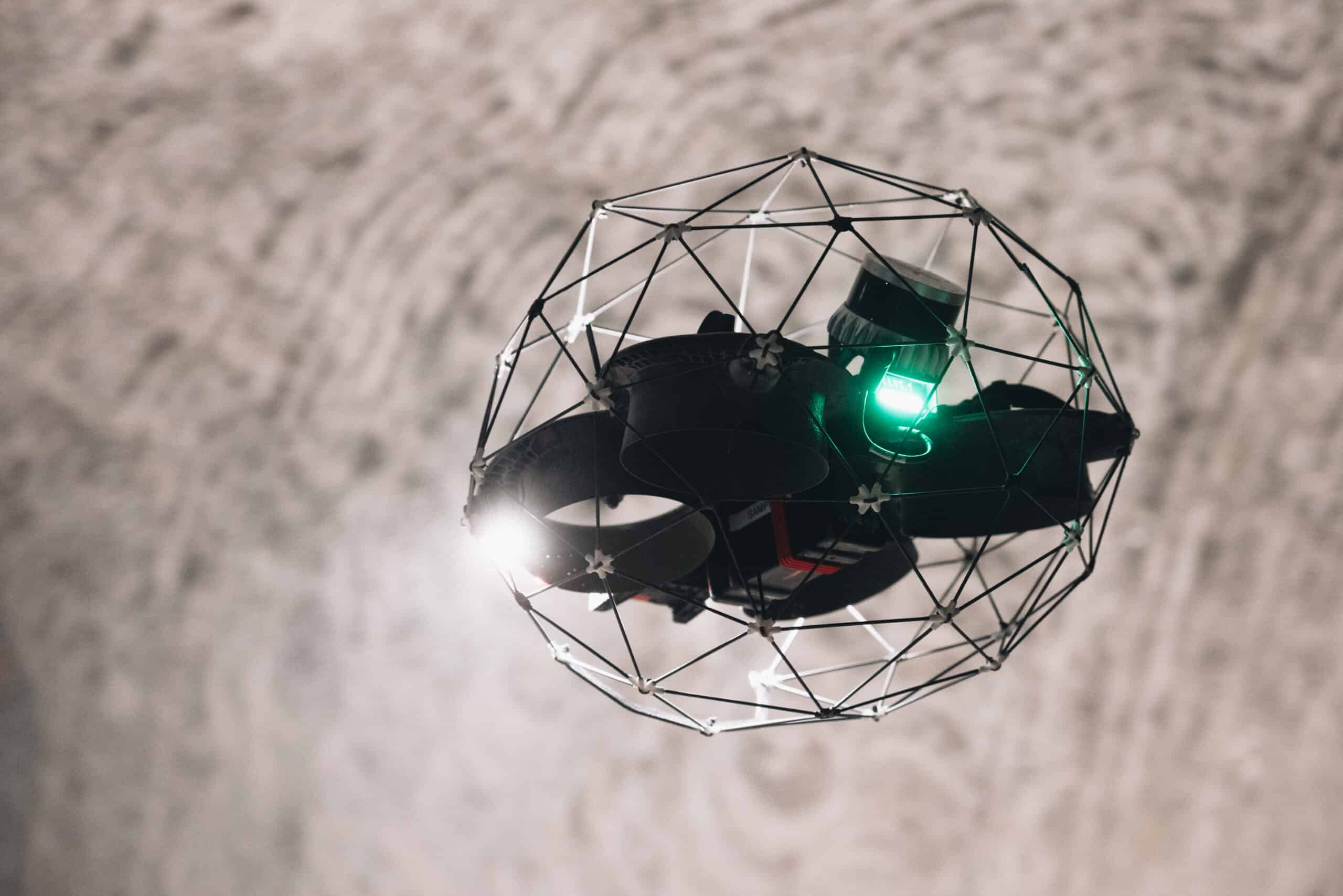
Every day, people risk their lives to enter dangerous, confined spaces to carry out their daily work. Not only can this be hazardous but also potentially fatal. Sometimes, rather than risking somebody’s life, we could use a tiny robot to do work normally carried out by people. Flyability’s team has come up with a solution for some of these situations. Their ultimate goal is to prevent people from having to venture into dangerous confined spaces. Instead of sending inspectors into confined spaces, such as mines and grain silos, they can send in drones. That way, they are able to save time, money and effort, but most importantly, they also keep people safe.
The drone’s features
“We are the first company to make a caged drone,” says Zacc Dukowitz, senior communications manager at Flyability. What makes Flyability’s drone different than other drones is its ability to fly into confined spaces. The design includes a cage that protects the drone in case it collides into something. According to Dukowitz, the design engineers of Flyability took their inspiration from insects. “Insects fly and they will collide into something eventually, but they manage to continue flying even though they bump into things. They just don’t fall to the ground.”
In addition, the machine is equipped with a LiDAR sensor that enables the creation of 3D models in real time, along with a live visual feed. “It works like a sonar, constantly sending out waves. This is how it can create a map of the surrounding pace based on how long it takes for those sound waves to return,” Dukowitz explains further. “Receiving 3D models as you fly provides a lot more information about the environment you’re flying in. It also really helps with the inspection.”
Another feature of Flyability’s drones is that they fly without using GPS. “This is very useful especially if you’re going to fly underground in a mine or in a sewer pipeline where you can’t get a GPS signal,” Dukowitz adds.
Origin story
It all started when the Fukushima disaster happened and then the tsunami hit. “One of our founders, Adrien Briod, was watching TV and noticed that robots were sent to assess the damage in the nuclear plant,” Dukowitz explains. That prompted the idea to send a robot into a place where it is too dangerous to send a person, and people are still able to see just as well what’s going on in that space. “Our founder saw that robots were all working on the ground surface, they were rolling in and just got swept away, or they weren’t able to keep on going,” Dukowitz elaborates further.
Fields of use
Industries where Flyability’s drones can be used are mining, gas, and oil, as well as in sewerage systems, power plants, and the pharmaceutical sector. “There are plenty of huge assets that need inspections,” Dukowitz points out. Typically, to do an inspection, a tank needs to be empty first, and then an inspector goes into the tank physically and checks whether the tank is well maintained. “This is potentially dangerous and it’s also really time-consuming. With a drone, you can just fly it into the tank, do the check-ups – and this is much quicker and obviously safer,” Dukowitz asserts.
In pharmaceutical factories, for example, big storage tanks are used for the production of medication. Dukowitz cites the example of a process that uses riboflavin. “It is a luminescence substance and it is sprayed on the sides of the tanks that are used in processing. Then it has to be cleaned off. The whole point is to see if the cleaning procedures are working. If there is some riboflavin left, then the cleaning procedure wasn’t good enough,” Dukowitz explains. “The inspectors used our drone instead of a person to go into the tank and make sure that the riboflavin had been used and that it had then been thoroughly cleaned afterwards.”
Another potential use of Flyability’s technology is in firefighting. “If a building is burning and you don’t know if there’s anyone in it who needs saving, you could send a drone in and use its thermal camera to locate the heat signature of people,” Dukowitz explains. Moreover, the thermal camera could detect smoldering fire that is not so easy to spot. The drone could also be used to do inspections if the building is stable enough for a person to go in and save people or to put out the fire.
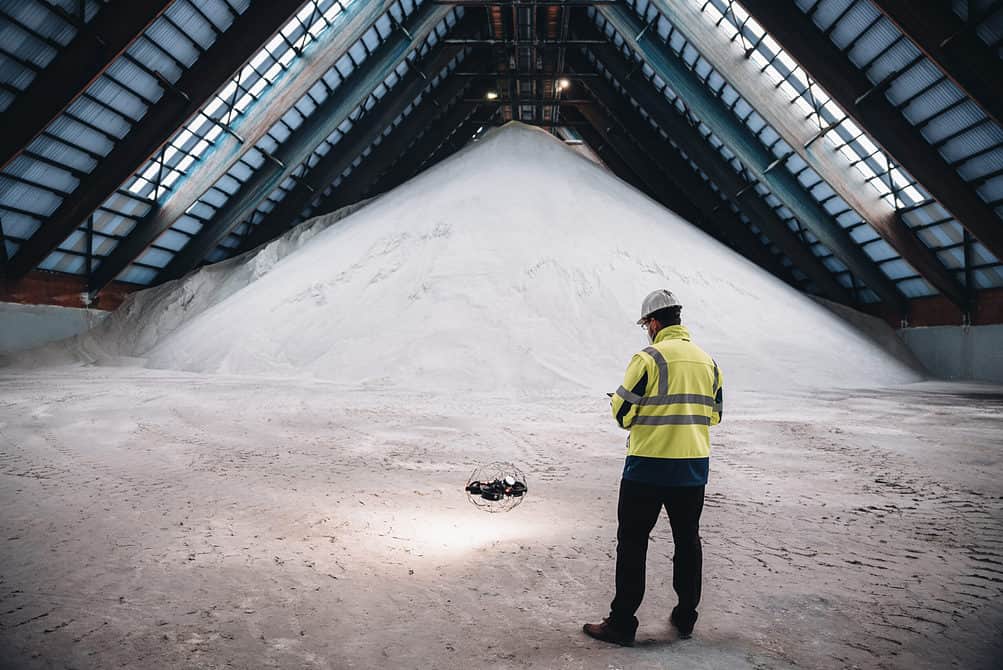

The challenges facing Flyability
“It took us four years to make the latest drone, the Elios 3, which is considered a very long time in the drone industry,” says Dukowitz. The drone had to be incredibly stable so that the inspector doesn’t receive a shaky image but a stable one instead. Achieving that stability took a lot of testing. “I’ve been in the field at a mine and the drone shot up and got caught on something at the top of the mineshaft. We had to throw rocks at it to pry it loose.”
The second challenge was to make the drone in such a way that it is easy to fly. Elios 2, the previous generation drone, was not that hard to fly but Dukowitz says that it still needed a professional pilot with a lot of training. Now, Elios 3 resembles consumer drones, and even people without much experience are able to fly it.
“Dust is also a real challenge,” adds Dukowitz. “It’s simple, but when you’re flying in a mine or around a cement plant and there’s a lot of it, it blinds the camera. This makes the inspection process more difficult. With Elios 3, however, it is possible to create a 3D model in which the drone is still visible in the space in which it is flying.
Future plans
One of the future goals of the company is to make its drones more autonomous. This means that they will be capable of flying on their own. Dukowitz confides that they are currently working on a return-to-home feature that would enable the drone to return to its place of departure if something goes wrong. “Elios 3 carries a LiDAR sensor but it can carry another type too. Although we haven’t developed this technology yet. We will be working on this to enable the drone to collect other types of data using different sensors”.
While these are among the most important types of data, inspectors still need more information on data collection. “What inspectors are interested in is data on gas. In other words, they want to be able to do ultrasound thickness measurements so that they can inspect the quality of the metal with the help of ultrasound and thickness measurements,” Dukowitz explains. Inspectors would also stand to benefit from being able to fly the drones inside nuclear power plants and be able to collect data on radiation.
